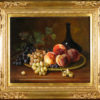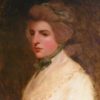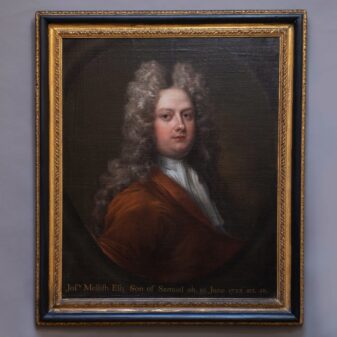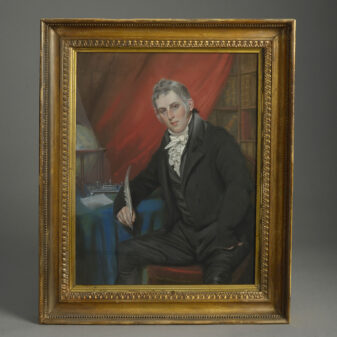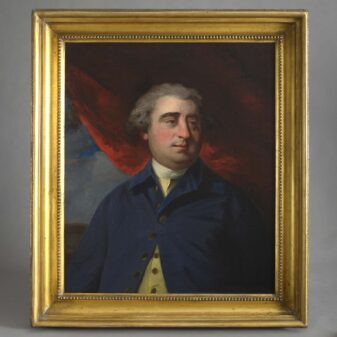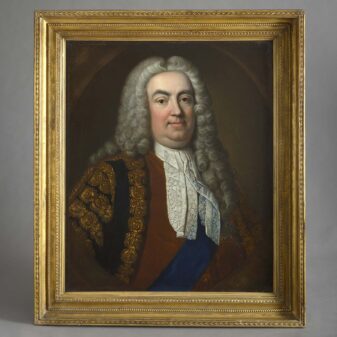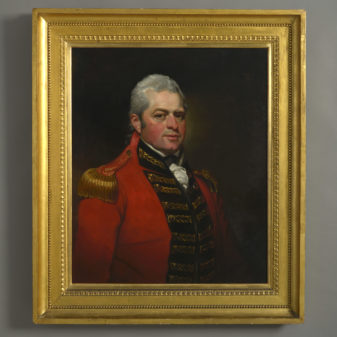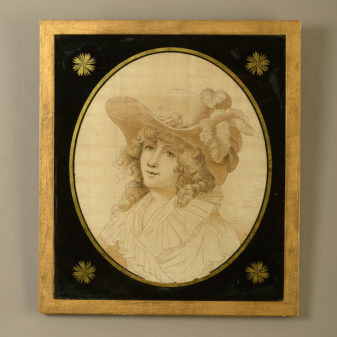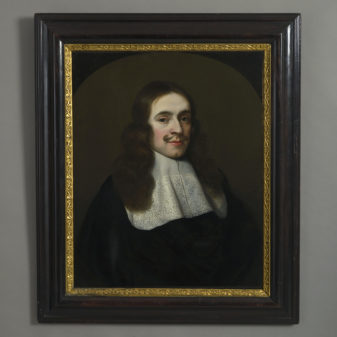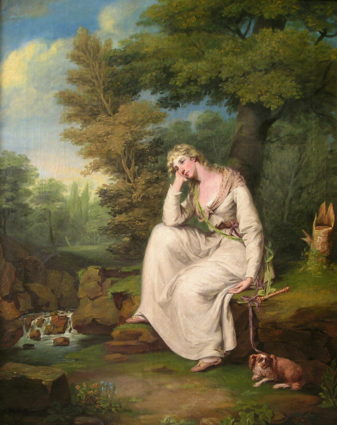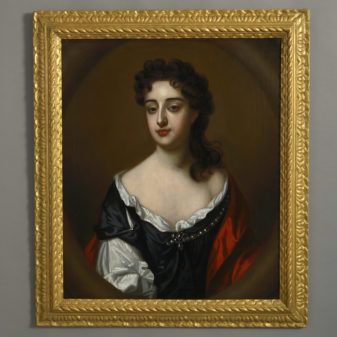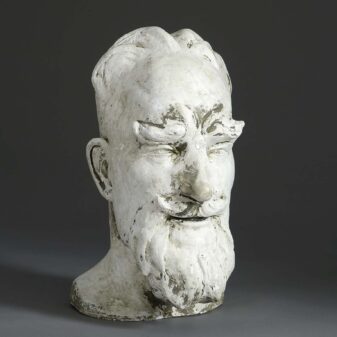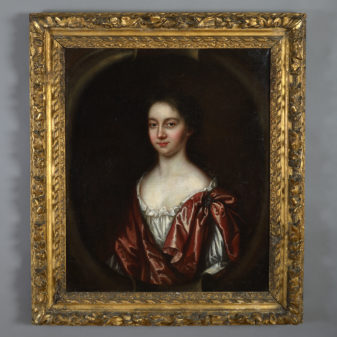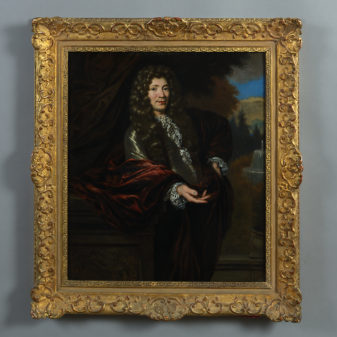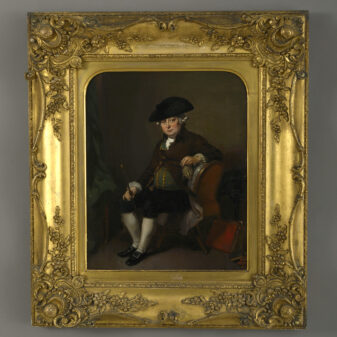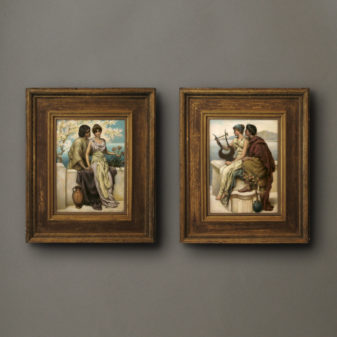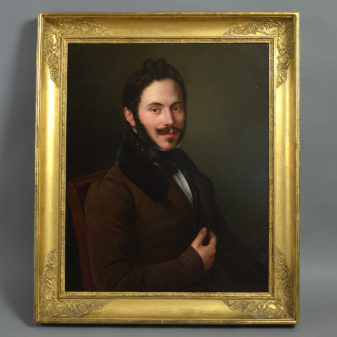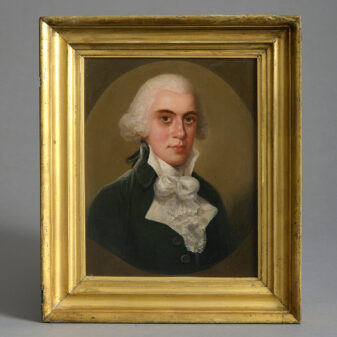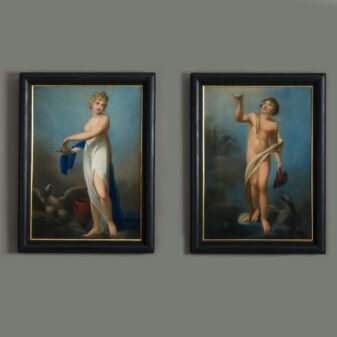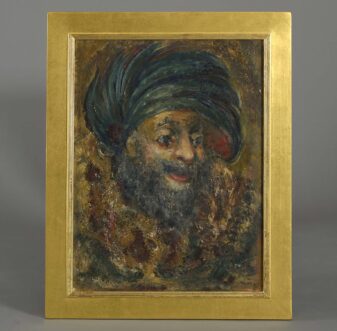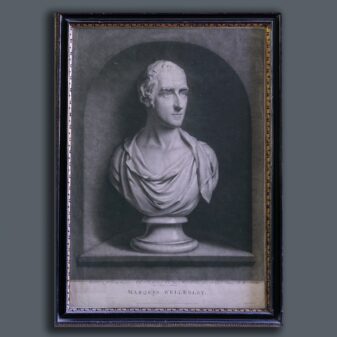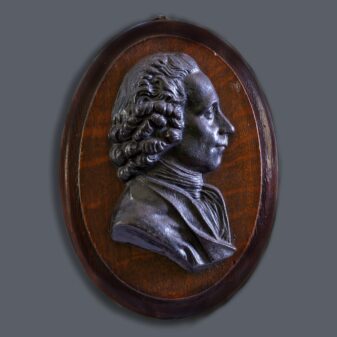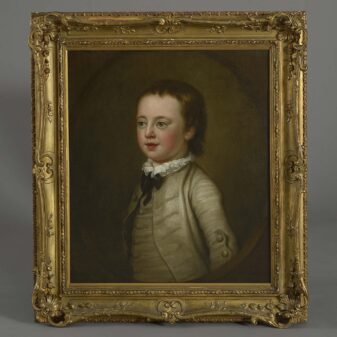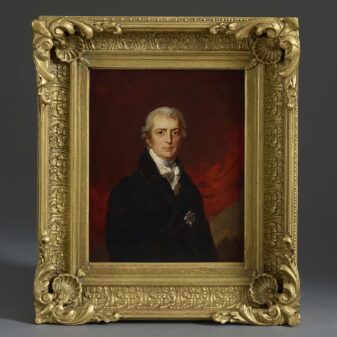Circa 1770 England
Attributed to Joseph Wright of Derby (1734-1797)
Original price was: £5,500.£3,850Current price is: £3,850.
1 in stock
Height 25 inches (63 1/2 cm)
Width 19 inches (48.26 cm)
Portrait of a Gentleman c. 1770
Judy Edgerton, curator of the Tate Gallery exhibition ‘Wright of Derby’, 1990 attributed this portrait to Wright on the basis of photographs. Alex Kidson, curator of the Walker Art Gallery exhibition ‘Joseph Wright of Derby in Liverpool’, 2007, on the basis of images, was of the opinion it was by an artist working closely to Wright.
Joseph Wright (1734-1797) was born in Derby and worked there for most of his life. In 1751, he went to London to study with the leading portrait-painter Thomas Hudson (1701-1779), and from 1768 until 1771 he worked in Liverpool where he had a successful portrait practice with the prosperous middle classes. From Derby, he sent works to exhibition at the Society of Artists in London, but the themes of his landscape and subject paintings and the sitters of his portraits were largely taken from Derby and the surrounding area.
In 1773, Wright took his new wife to Italy, where he studied the Renaissance masters and the antique, but he was particularly fascinated by the landscape and especially Mount Vesuvius, which was to be an inspiration in his later fire-paintings. He returned to Derby in September 1775, and shortly after went to Bath for just over a year.
On his return to Derby in June 1777, he spent more time on landscape painting, but still kept up the portrait business, taking up where he had left off at his departure to Italy. The following year he began to exhibit at the Royal Academy. The label ‘Wright of Derby’ was first bestowed on him by the Gazetteer’s exhibition reviewer of 1768. At a time when it was improper to use artists’ Christian names, it became necessary to differentiate between two ‘Mr Wrights’ who were exhibiting simultaneously, Joseph and Richard Wright of Liverpool.
The stance in this portrait was one that Wright appears to have found agreeable for a number of his portrait compositions. A delicate feigned oval just encroaches and the sitter almost seems to rest his elbow on the edge with a slight turn of the head and body to prevent it from being a mere profile; this simplicity of approach to the composition is enlivened by masterful strokes of the brush to highlight flashes of light on the edges of the coat buttons, the scarf and most importantly the eyes. Throughout his career, Wright had an absorbing interest with chiaroscuro and the effects of light sources. While his earliest works reflect the poses and glowing tones of his master Thomas Hudson, he soon developed a preoccupation with the atmospheric effects of light which are a hallmark of his work. In the present painting, the sitter’s coat is subtly lit from an unseen source, high up and to the left. A more diffused light softens the features, while the shaded half of the gentleman’s face is almost silhouetted against a source of reflected cool light from behind.

